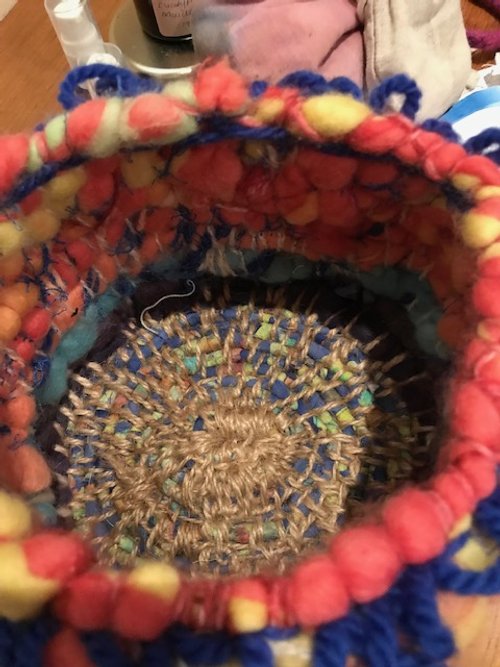A chamomile compress is the application of chamomile tea in a hot, dry cloth, compressed over the abdomen with a narrow blanket. The very sensitive blossoms of the chamomile reach the nervous system to calm it without having to pass through the digestive system.
A chamomile compress is used for insomnia, pain related to menstruation, for people with poor digestion due to nervousness, or after a busy day studying. It may affect the Sense of Movement and Sight by harmonising the relationship between environmental stimulus and the sensory processing that carries the outer stimulus to the inner life.
When to use it
The chamomile compress helps the nervous system quieten, and improves digestion. It is highly valuable for insomnia, pain related to menstruation, for people with poor digestion due to nervousness, or after a busy day studying. It affects the Sense of Movement and Sight by harmonising the relationship between environmental stimulus and the sensory processing that carries the outer stimulus to the inner life.
When not to use it
Do not use hot compresses over the abdomen when the digestive system is inflamed, for example with diarrhoea or vomiting from bacterial infection or with stomach pain associated with fever.
Instructions
Lay a large sheet on the bed (later the patient will lie upon it and be wrapped /cocooned in it, so allow enough at the top to fold over the crown of the head and eyes). Make the pillow comfortable and the room temperature suitable for the patient to be wrapped. Ideally the fan is off and the room quiet. It is best to have a non-stimulating environment to reduce sensory experiences, allowing both the chamomile and the warmth on the abdomen to nourish the patient.
Lay the scarf across the sheet and then lay the scarf liner on top of the scarf. Line them up where the abdomen will be when the patient is lying down.
The patient lies down on their back, over the scarf and liner. The scarf and liner will later be wrapped over the bottom ribs and down past the bladder, so lift any clothing that is in the way. If necessary, fold the edges of the scarf and liner to the correct width as if it is too wide on a narrow waist an air pocket will exist that cools the compress cloth too quickly.
Lightly wrap the scarf and liner around the patient and place the hot water bottle on top so that the abdomen becomes warm and they start to relax.
Making the tea
Use half a litre (500ml) of hot water and allow the chamomile to steep in a covered thermos or saucepan. Chamomile does not take long to steep. The blue etheric oils are easily released when in hot water - approximately 3 mins or so.
Preparing the compress cloth
While the tea is steeping, roll the compress cloths. Fold the compress cloth to a size that will fit on the abdomen neatly. It will probably be about the size of the hot water bottle. Then roll it up so that later it can be unrolled onto the abdomen. Open the wringer cloth fully. In the centre of the wringer cloth place the rolled compress cloth. Then roll the wringer cloth with the compress cloth inside, so together they look like a bonbon.
Place the bonbon in the bowl, keeping the ends out and dry so you can hold them to wring. Pour the tea over the bonbon, straining as you go. When the bonbon is soaked through, lift it above the bowl and wring it until there is no moisture being released. Take the third cloth as an extra wringing layer to protect your hands and wring again making sure no more moisture comes from the inside cloths. If hot liquid remains in the cloth it will burn the skin and then cool too fast. It’s best not to wear gloves, only use them if the heat is unbearable when wringing.
Applying the compress cloth
Unravel the compress cloth from the bonbon but keep the compress cloth rolled to retain the heat. Once unravelled there is about 5 seconds between it being too hot, and being too cold. So make sure the patient is ready. Gently expose the abdomen and touch the compress cloth against less sensitive parts of the body, for example the outer forearm, then the inner forearm. Then move the cloth towards the abdomen and unroll to the folded size so that it covers the soft part of the torso. It will be hot when laid on the skin, but if it has been successfully wrung, only the first second will seem too hot before it becomes a comforting heat.
In a gentle but non-delayed motion take one end of the scarf liner and wrap it tightly over the compress cloth and around the patient, then wrap over the other end of the scarf liner and tuck it in behind the patient. Wrap the woollen scarf in the same way over the top of the liner. The idea here is to compress the cloth onto the abdomen without air being able to enter the area. The wrapping will be firm but not uncomfortable. Place the hot water bottle on top to keep the area warm.
Wrapping into a cocoon
Using the prepared top sheet wrap the patient from the feet to the shoulders, tucking down the sides of their body as you go. This is not a light wrap, but a firm wrap so that the patient experiences their periphery as they are being wrapped. If the patient allows, fold the sheet over the head to cover the eyes and press against the ears gently, or use an additional sarong or towel to complete the head wrap. The only part exposed is the mouth and nose. When wrapping children you may like to tell of a caterpillar who was wrapped up in a beautiful silk cocoon and rested quietly until it was time to become a butterfly.
Resting and removing the compress
The compress cloth stays on for 20mins. If the compress becomes cold to the patient it can be detrimental and therefore should be removed sooner. When it is time for the compress cloth to be removed, quietly loosen the sheet and scarf enough that you can slide out the compress cloth easily while leaving the scarf and liner in place. The patient rests for a further 20mins. The rest is equally important as the compress. If the patient is hot, loosen the cocoon. Silence throughout both the compress and rest is recommended and aids the effect.
Qualified health practitioner advice should be sort for all health concerns.
Ingredients and Equipment
1 tablespoon of chamomile flowers - preferably organic
Thermos or a saucepan with lid - to steep the tea
Tea strainer
Bowl - to strain the tea into
Hot water bottle with cover - fill it to half, without air trapped inside
3 cloths - made of raw silk, linen, baby muslin or old woollen thermals. The first is the compress cloth and must be large enough to be folded into a padded wad, to cover the abdomen. The second is the wringer cloth and the third is an extra wringer cloth. Tea towels and flannels work well.
Woollen scarf or long piece of woollen material to wrap around the abdomen and tuck in behind the back. The wool is insulating.
Scarf Liner - a piece of flannelette or cotton is ideal, the same size as the scarf so that the scarf does not irritate the skin or become wet from the compress cloth.















